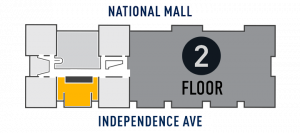The Apollo Lunar Surface Drill (ALSD) was deployed on Apollo 15, 16, and 17. It consisted of a cordless, battery-operated motor with specialized drill bits and modular core stems. The system was designed to extract soil column samples and to create holes for emplacement of two heat flow probes into the lunar surface. Each core stem segment was a rigid but hollow tube measuring about 40 cm. (16 in.) in length. Joined together and driven into the surface, they enabled astronauts to drill as deep as 10 ft into the lunar soil.
This drill was used for training. It was transferred from NASA to the Smithsonian in 1975 and placed on display in 1979.
Display Status
This object is on display in Destination Moon at the National Air and Space Museum in Washington, DC.

Object Details
Country of Origin
United States of America
Type
EQUIPMENT-Lunar
Manufacturer
Martin Marietta Aerospace
Dimensions
Overall: 1ft 10 13/16in. x 9 7/16in. x 4 3/4in., 29.5lb. (58 x 24 x 12cm, 13.4kg)
3-D (Drill Motor): 16 × 15 × 46cm (6 5/16 × 5 7/8 × 18 1/8 in.)
3-D (Handle): 45.5 × 6.5cm (17 15/16 × 2 9/16 in.)
3-D (Foot Piece): 54 × 15 × 15.5cm (21 1/4 × 5 7/8 × 6 1/8 in.)
3-D (Cradle, Open): 65 × 66 × 70cm (25 9/16 × 26 × 27 9/16 in.)
3-D (Cradle, Collapsed): 74 × 31 × 24cm (29 1/8 × 12 3/16 × 9 7/16 in.)
Materials
Handle / power unit:
Ferrous Alloy (Steel)
Aluminum
Rubber
Metal Alloys (Wire)
Synthetic covering (Plastics)
Aluminized Mylar
Core tube:
Ferrous Alloy (Steel) covered in Fiber Glass
Other Materials:
Paint
Adhesive Stickers
Ink
Synthetic Fiber Fabric
Velcro
Inventory Number
A19750038000
Credit Line
Transferred from NASA, Johnson Space Center.
Data Source
National Air and Space Museum
Restrictions & Rights
Usage conditions apply
For more information, visit the Smithsonian’s Terms of Use.

